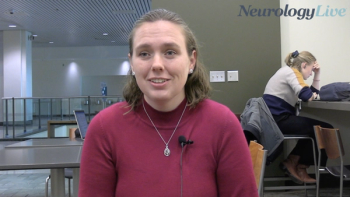
Addition of Quizartinib FLT3 Inhibitor to Cell Transplant Improves Survival in AML
Patients were newly diagnosed and had acute myeloid leukemia positive for FLT3-iTD mutations.
Adding quizartinib, an FLT3 inhibitor, to the treatment regimen of patients with acute myeloid leukemia (AML) with FLT3 mutations (FLT3-iTD+) undergoing
These data, from the phase 3 QuANTUM-First study (NCT02668653), were presented at the 2023 Society of Hematologic Oncology (SOHO) 11th Annual Meeting, held September 6-9 in Houston, Texas, by Alexander E. Perl, MD, Associate Professor of Medicine (Hematology-Oncology), University of Pennsylvania.
“FLT3 is among the most common AML genetic mutations andallo-HCT in first complete remission (CR1) improves survival. FLT3-ITD+ is associated with poor prognosis, high relapse rates, and inferior OS.Allo-HCT in CR1 improved survival, in particular in AML with high FLT3-ITD allelic frequency. Rates of relapse are still high in patients with FLT3-ITD-positive newly diagnosed AML, even after allo-HCT," Perl said during his presentation.
QuANTUM-First evaluated the efficacy and safety of quizartinib in patients with AML and FLT3-ITD up to 75 years of age and up to 3 years of continuation therapy after standard HiDAC consolidation and/or allo-HCT in CR1. Previously published data have shown that the addition of quizartinib to standard induction and consolidation chemotherapy, including allo-HCT, followed by up to around 3 years of quizartinib continuation monotherapy significantly improved OS and relapse-free survival. Perl and colleagues further investigated the impact of allo-HCT in CR1 with quizartinib treatment in this population.
WATCH NOW:
In this new analysis, the investigators found that patients that received allo-HCT plus quizartinib had a median OS of 31.9 months compared with 15.1 months in those who did not receive quizartinib (hazard ratio [HR], 0.78 [95% CI, 0.62-0.98), 2-sided P = .032). Further analyis revealed that longer survival was observed in patients treated with quizartinib versus placebo, regardless of pre allo-HCT minimal residual disease (MRD) status.
"The addition of quizartinib provided a clinically meaningful and statistically significant improvement in OS compared with standard induction and consolidation therapy alone. In patients who underwent allo-HCT in CR1, longer survival was observed in those treated with quizartinib versus placebo. Irrespective of allo-HCT performed in CR1, longer survival was observed in those treated with quizartinib versus placebo. Irrespective of pre allo-HCT MRD status, longer survival was observed in those treated with quizartinib versus placebo,” Perl said. “No new safety signals were identified in patients who underwent allo-HCT.”
REFERENCE
Schlenk RF, Montesinos P, Romero-Aguilar A, et al. Impact of allogeneic hematopoietic cell transplantation in first complete remission plus FLT3 inhibition with quizartinib in acute myeloid leukemia with FLT3-ITD: Results from QuANTUM-First. Presented at: 2023 SOHO 11th Annual Meeting; September 6–9; Houston, Texas.
Newsletter
Stay at the forefront of cutting-edge science with CGT—your direct line to expert insights, breakthrough data, and real-time coverage of the latest advancements in cell and gene therapy.



































